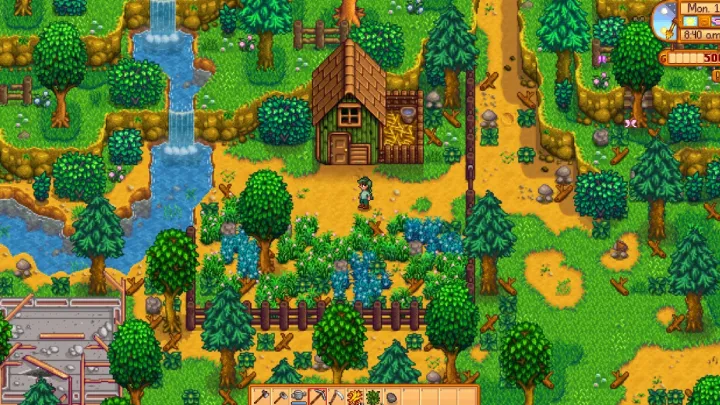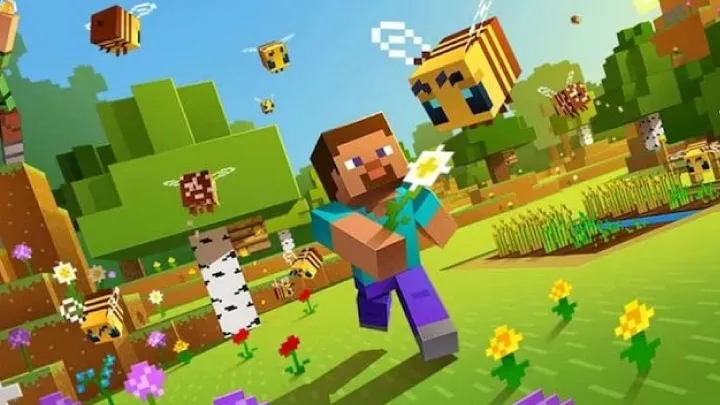Introduction
Stardew Valley is a charming farming simulation game that invites players to escape the hustle and bustle of city life and create their own idyllic farm in the peaceful town of Pelican Town. Developed by ConcernedApe, this indie gem combines elements of farming, crafting, mining, and social interaction, allowing players to design their dream farm while building relationships with the townsfolk. With its pixel art style and soothing soundtrack, Stardew Valley offers a relaxing yet engaging gameplay experience. This article will provide essential tips and guides to help you navigate the game, optimize your farming strategies, and make the most of your time in Pelican Town.
H2: Getting Started: The Basics of Stardew Valley
H3: Understanding Your Farm
When you first start your journey, you'll inherit a run-down farm from your grandfather.
- Farm Layout: Familiarize yourself with the layout of your farm. You'll have a variety of areas to work with, including fields for crops, a forested area for foraging, and space for buildings.
- Initial Resources: Gather the initial resources available to you, such as wood, stone, and fiber. These materials will be crucial for crafting tools and building structures.
H3: Choosing Your Character and Farm Type
Customization is a key aspect of Stardew Valley.
- Character Creation: Spend time customizing your character’s appearance, including their hairstyle, clothing, and skin tone. This allows you to create a character that you’ll enjoy playing as.
- Farm Types: Choose between different farm layouts, each offering unique advantages. For example, the Standard Farm is versatile, while the Riverland Farm provides easy access to water for fishing.
H2: Mastering Farming Techniques
H3: Crop Selection and Seasons
Understanding crop growth is essential for a successful farm.
- Seasonal Crops: Each season features different crops. For instance, strawberries thrive in spring, while pumpkins grow in fall. Research which crops provide the best yield and profit for each season.
- Crop Rotation: Plan your planting schedule to maximize your profits. Crop rotation helps maintain soil health and ensures that you’re always cultivating the most profitable crops.
H3: Watering and Fertilizing
Proper care for your crops is crucial for a bountiful harvest.
- Watering Methods: Use your watering can daily to keep crops healthy. Upgrading your watering can will allow you to water multiple crops at once, saving time.
- Fertilizers: Use fertilizers to enhance crop growth and quality. Different fertilizers provide various benefits, such as increased yield or improved quality.
H2: Expanding Your Farm
H3: Building Structures
As your farm grows, building structures becomes essential.
- Barns and Coops: Invest in barns for livestock and coops for chickens. These structures provide space for animals, allowing you to produce eggs, milk, and other products.
- Sheds and Silos: Build sheds to store tools and resources, while silos allow you to store hay for your animals during the winter months.
H3: Crafting and Upgrading
Crafting is a central part of the game, allowing you to create tools, machines, and other useful items.
- Crafting Stations: Utilize crafting stations like the Crafting Table and the Furnace to create items. Familiarize yourself with the recipes available and gather the necessary materials.
- Tool Upgrades: Upgrade your tools to improve efficiency. For example, a better axe will allow you to chop wood faster, while a higher-level pickaxe can break rocks more easily.
H2: Mining and Resource Gathering
H3: The Mines
The mines are a vital source of resources and adventure.
- Mining Basics: Venture into the mines to collect ores, gems, and other valuable materials. Be prepared for combat against various monsters that inhabit the deeper levels.
- Mining Equipment: Equip yourself with a pickaxe and food items to restore health. Bring bombs to clear large areas of rock quickly.
H3: Foraging and Fishing
Foraging and fishing provide additional resources to support your farm.
- Foraging: Explore the surrounding areas for wild plants, fruits, and mushrooms. Foraging can yield valuable items that can be sold or used in crafting.
- Fishing Techniques: Learn different fishing techniques and locations to catch a variety of fish. Each season offers unique fish species, so adapt your fishing strategy accordingly.
H2: Building Relationships in Pelican Town
H3: Interacting with Townsfolk
Building relationships with the residents is a rewarding aspect of Stardew Valley.
- Gifts and Preferences: Give gifts to townsfolk to increase your friendship levels. Each character has specific likes and dislikes, so pay attention to their preferences.
- Events and Festivals: Participate in seasonal events and festivals to strengthen relationships. These events often feature mini-games, food, and opportunities to win prizes.
H3: Completing Quests and Requests
Engaging in quests can enhance your relationships and provide rewards.
- Villager Requests: Pay attention to requests posted on the bulletin board. Completing these tasks can lead to increased friendship and valuable rewards.
- Story Quests: Some townsfolk have storylines that unfold as your relationship grows. Completing these quests can unlock new dialogue and events.
H2: Managing Your Time
H3: Daily Routines
Time management is crucial in Stardew Valley.
- Daily Planning: Plan your daily activities to maximize productivity. Prioritize tasks such as watering crops, mining, and interacting with villagers.
- Energy Management: Keep an eye on your energy levels. Activities consume energy, and running out can hinder your progress. Eat food to restore energy when needed.
H3: Seasonal Changes
Each season brings new opportunities and challenges.
- Seasonal Tasks: Adapt your tasks according to the season. For instance, focus on planting new crops in spring and preparing for winter in fall.
- Planning Ahead: Prepare for seasonal changes by gathering resources and crafting items that will be useful in the upcoming season.
H2: Exploring Endgame Content
H3: The Community Center
The Community Center is a central hub for various activities and goals.
- Bundles and Rewards: Complete bundles by donating specific items to the Community Center. Completing all bundles unlocks significant rewards, including new buildings and upgrades.
- JojaMart vs. Community Center: Decide whether to restore the Community Center or join JojaMart. Each choice offers unique benefits and gameplay experiences.
H3: Exploring the Desert and Skull Cavern
Unlocking the desert and Skull Cavern opens up new challenges.
- Desert Access: To access the desert, you’ll need to repair the bus. This area offers unique resources and new activities, such as the Oasis and the Desert Trader.
- Skull Cavern Exploration: The Skull Cavern is a challenging area filled with powerful monsters and valuable resources. Prepare thoroughly with food, weapons, and supplies before venturing in.
H2: Crafting and Cooking
H3: The Importance of Cooking
Cooking is a valuable skill that can enhance gameplay.
- Cooking Recipes: Gather ingredients to cook various dishes that provide buffs, restore health, and increase energy. Cooking can significantly improve your efficiency in the game.
- Utilizing the Kitchen: Build a kitchen in your farmhouse to access cooking recipes. Experiment with different ingredients to discover new dishes.
H3: Crafting Machines and Tools
Crafting machines can automate tasks and increase productivity.
- Essential Machines: Invest in crafting machines like the Preserves Jar and Keg to create artisan goods. These products can be sold for higher profits compared to raw materials.
- Upgrading Tools: Continuously upgrade your tools and machines to improve efficiency and unlock new crafting recipes.
H2: Tips for Maximizing Profits
H3: Crop Selection for Profit
Choosing the right crops can maximize your profits.
- High-Value Crops: Focus on growing high-value crops that yield the most profit. For example, blueberries and cranberries are profitable choices due to their continuous harvest.
- Greenhouse Usage: Unlocking the greenhouse allows you to grow crops year-round. Use this space strategically to cultivate high-value crops regardless of the season.
H3: Artisan Goods and Production
Creating artisan goods can greatly increase your income.
- Processing Raw Materials: Use machines to process raw materials into artisan goods. For instance, turning milk into cheese or fruits into wine can yield higher profits.
- Market Trends: Pay attention to market trends and seasonal demands. Adjust your production strategy based on what is selling well at the market.
Conclusion
Stardew Valley offers a rich and fulfilling experience that combines farming, exploration, and social interaction. By following these tips and guides, you can optimize your gameplay, build a thriving farm, and create meaningful relationships with the townsfolk. Whether you're cultivating crops, exploring the mines, or participating in festivals, every moment in Pelican Town is an opportunity for adventure and growth. Enjoy your journey in this delightful farming simulation, and may your farm flourish!


















